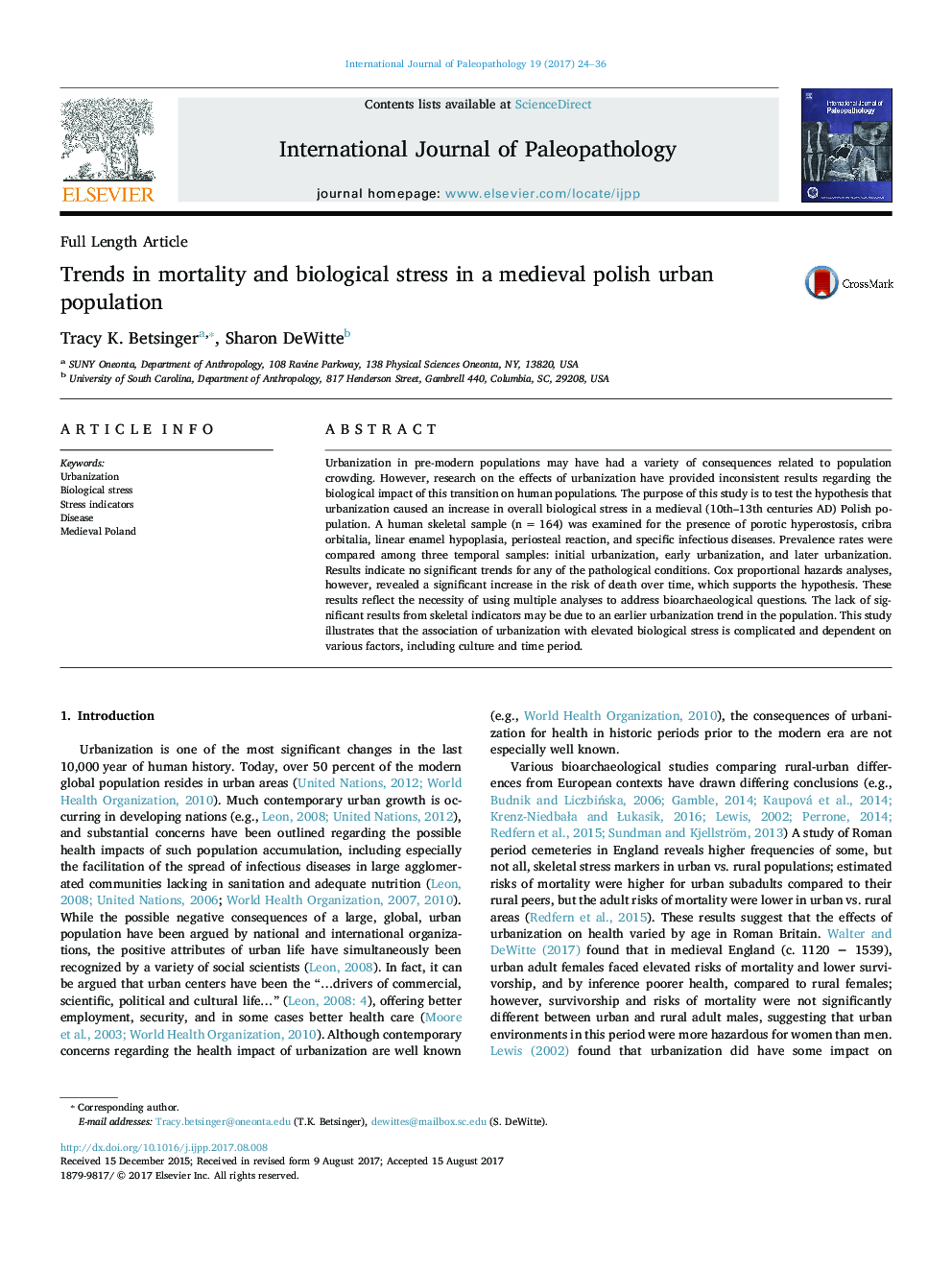| Article ID | Journal | Published Year | Pages | File Type |
|---|---|---|---|---|
| 4760551 | International Journal of Paleopathology | 2017 | 13 Pages |
Abstract
Urbanization in pre-modern populations may have had a variety of consequences related to population crowding. However, research on the effects of urbanization have provided inconsistent results regarding the biological impact of this transition on human populations. The purpose of this study is to test the hypothesis that urbanization caused an increase in overall biological stress in a medieval (10th-13th centuries AD) Polish population. A human skeletal sample (n = 164) was examined for the presence of porotic hyperostosis, cribra orbitalia, linear enamel hypoplasia, periosteal reaction, and specific infectious diseases. Prevalence rates were compared among three temporal samples: initial urbanization, early urbanization, and later urbanization. Results indicate no significant trends for any of the pathological conditions. Cox proportional hazards analyses, however, revealed a significant increase in the risk of death over time, which supports the hypothesis. These results reflect the necessity of using multiple analyses to address bioarchaeological questions. The lack of significant results from skeletal indicators may be due to an earlier urbanization trend in the population. This study illustrates that the association of urbanization with elevated biological stress is complicated and dependent on various factors, including culture and time period.
Related Topics
Life Sciences
Biochemistry, Genetics and Molecular Biology
Physiology
Authors
Tracy K. Betsinger, Sharon DeWitte,
